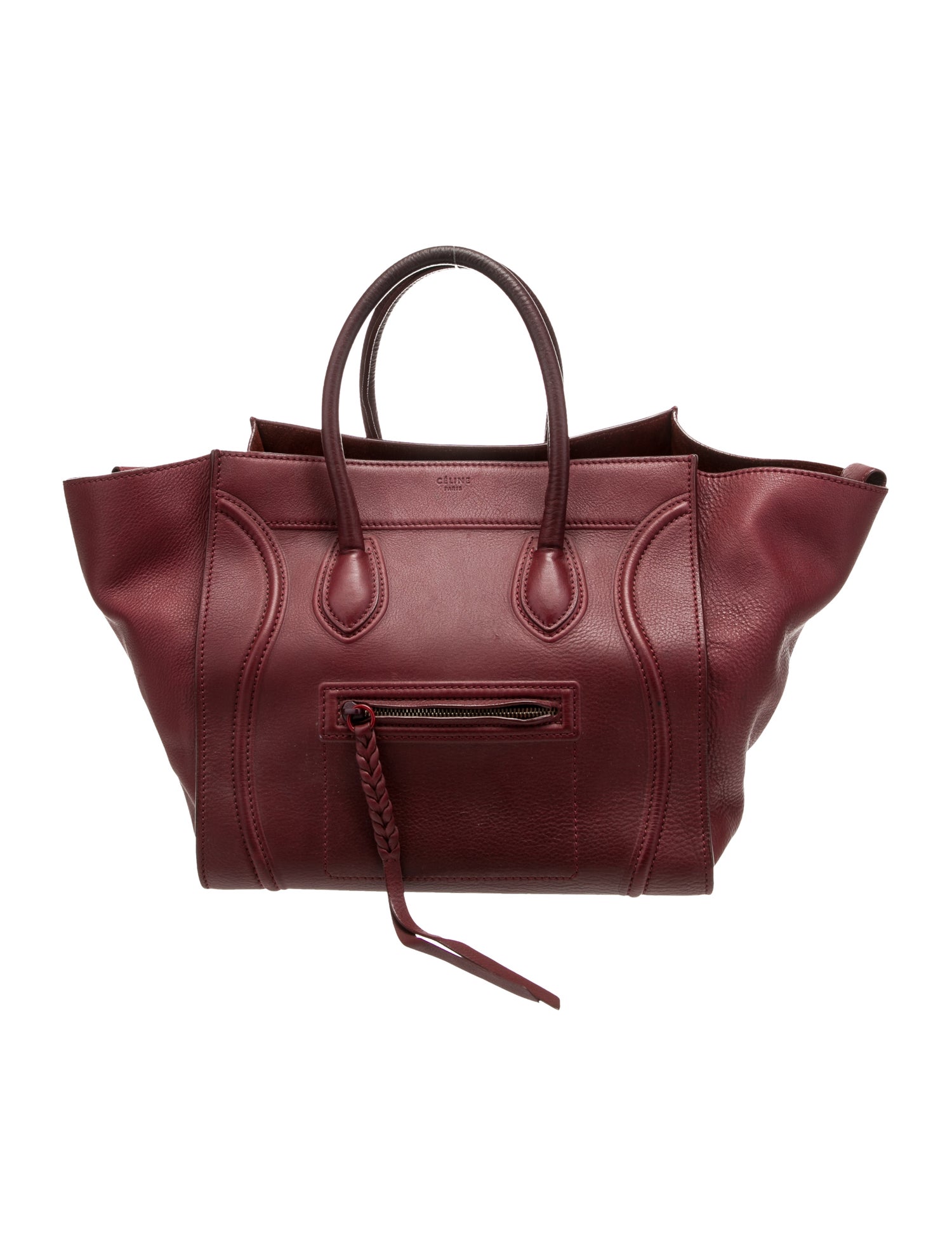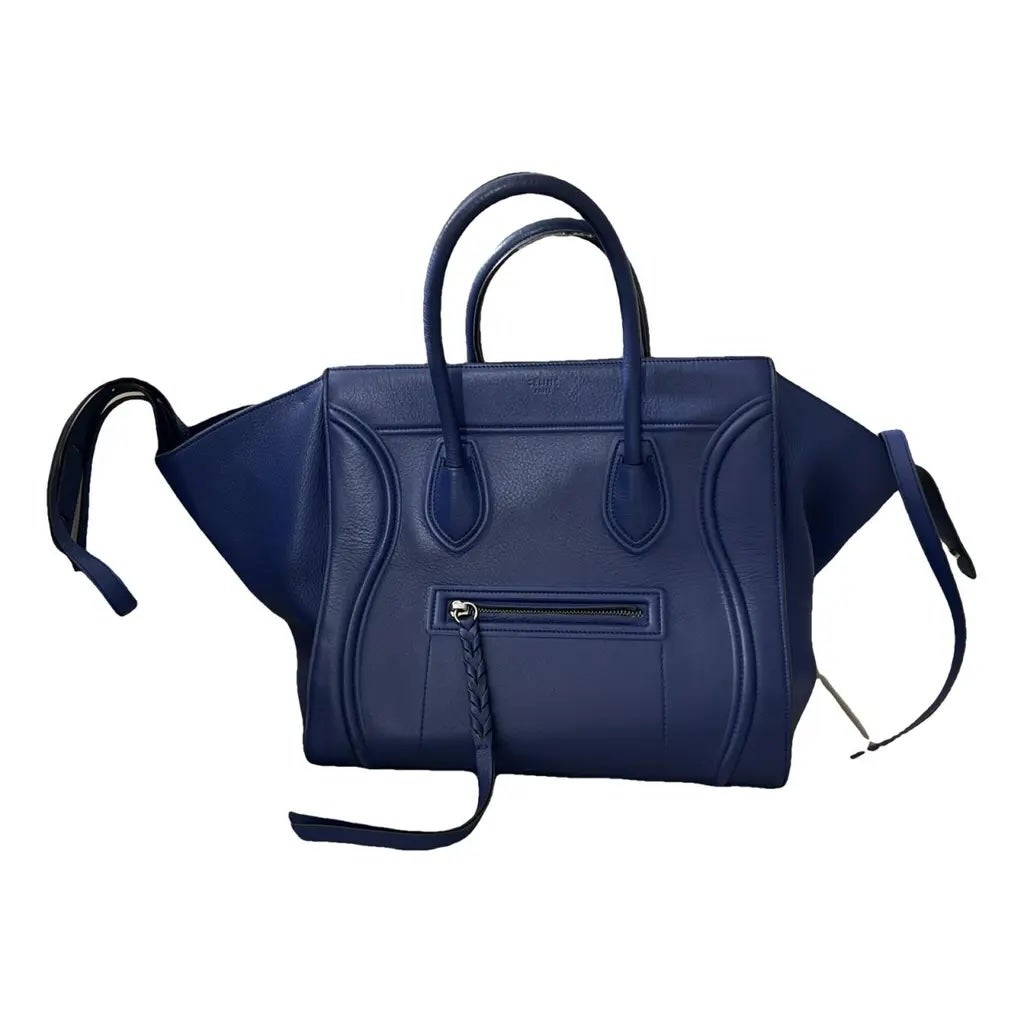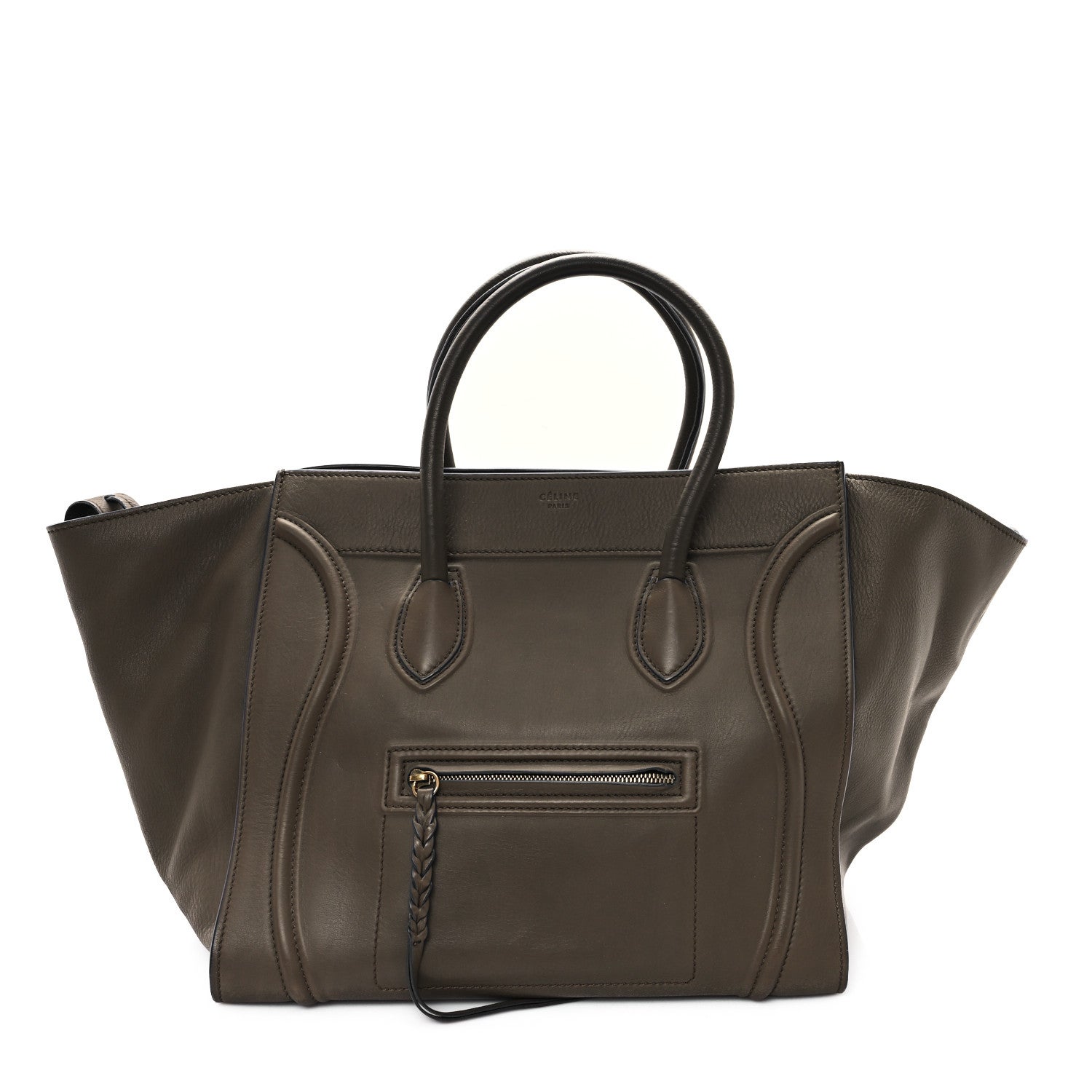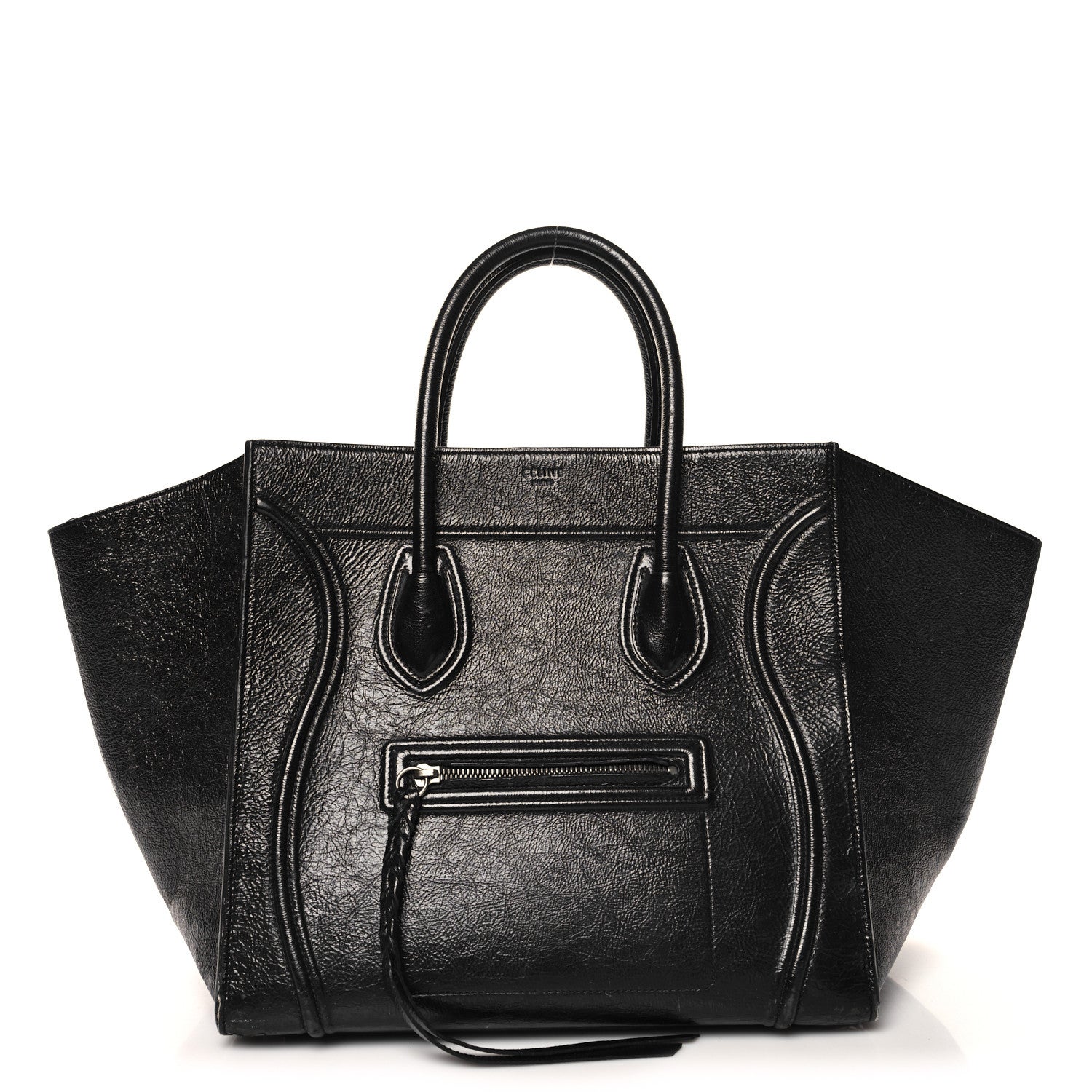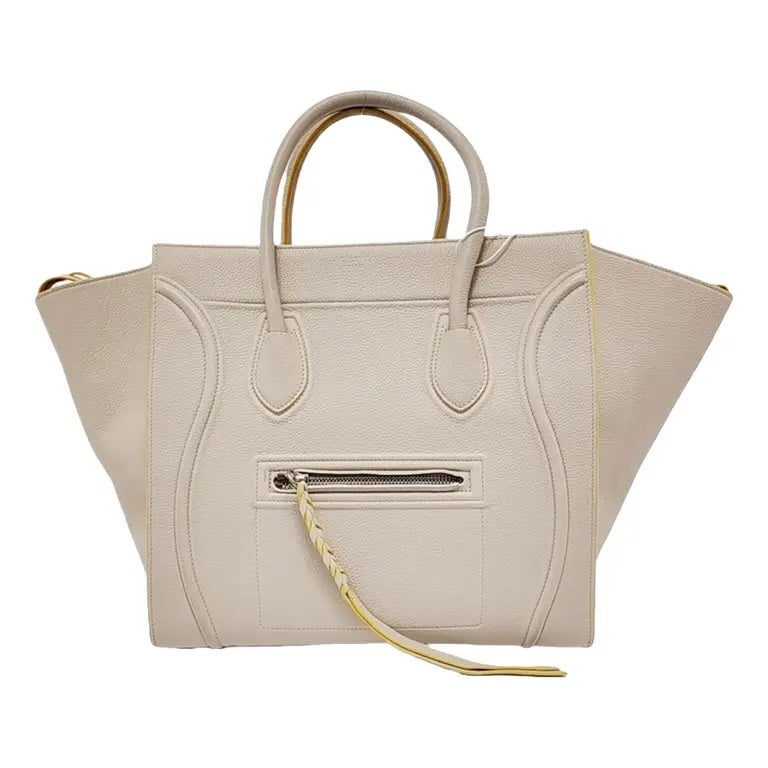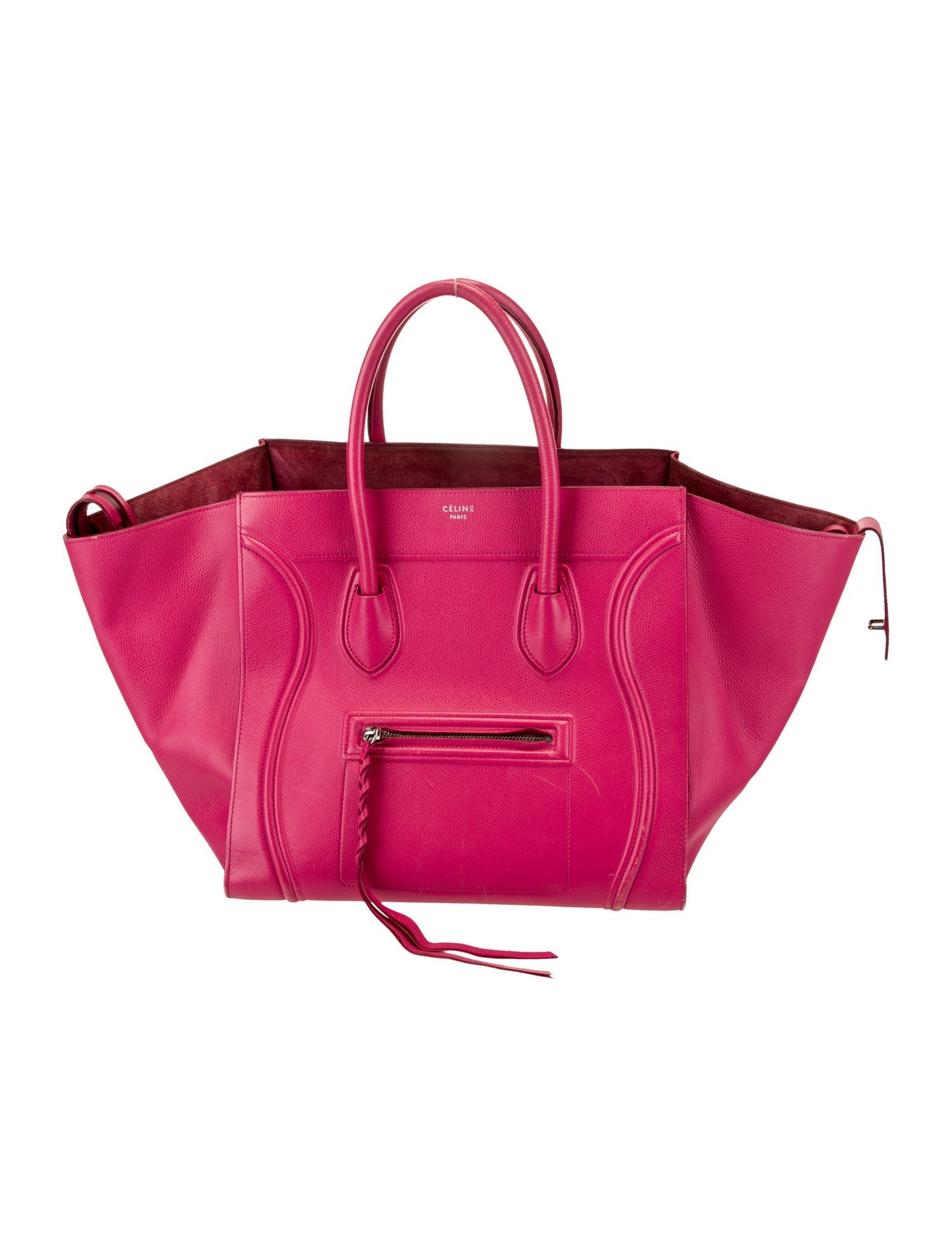Is Celine Phantom The Next Big Designer Comeback Bag?
All linked products are independently selected by our editors. If you purchase any of these products, we may earn a commission.
Photo: Kirstin Sinclair/Getty Images.
The 2010s were the golden age of the It bag — and few designers had a hold over the category quite like Phoebe Philo.
The British designer became Celine’s creative director in 2008, and had her first hit in the accessories department shortly thereafter, with the introduction of the Luggage bag in 2009. The boxy tote, with its distinctive handle placements and exterior zipper, quickly became a staple on the arms of the oft-papped, from Nicole Richie to Lindsay Lohan to Rihanna.
“That was the height of the It bag era and the It Girl era,” says Noelle Sciacca, associate director of fashion and strategic partnerships at The RealReal. “Whether you were in the fashion space or not, you knew what that bag was because of the paparazzi photos… If you saw Lindsay Lohan or someone from The Simple Life had it, you wanted that style.” As a result, this ignited a desire for boxier handbags, even among shoppers who didn’t have a Celine budget. (Most Luggage bags fell in the $2,000-$3,500 range.) “Every contemporary brand, every mall brand started to do that [Luggage] shape because it felt so unique,” she says.
AdvertisementADVERTISEMENT
A few years later, in 2011, Philo riffed on the design and birthed another soon-to-become icon: the Phantom. Roomier than the Luggage, with wings jutting out from either side, the Phantom was inspired by Celine suitcases from the 1970s. It boasted the same handles and zipper (except the latter had a long braided rope pull) as its handbag sibling, so, together, they were often referred to as the “smile bags.” The silhouette attracted an even bigger celebrity following than the Luggage, spotted on the arms of Kim Kardashian, Gwyneth Paltrow, and Celine Dion, as well as models of the moment like Alessandra Ambrosio and Lily Aldridge.
Photo: GVK/Bauer-Griffin/GC Images.
“The Phantom always stood out because of its oversized, unstructured shape and dramatic wings,” says Anais Rivera, director of procurement at Fashionphile. “It felt bolder, cooler, and a little less polished than the rest. It has this effortless, slouchy vibe that makes it feel different. It doesn't try too hard, and that’s exactly what made people gravitate toward it. You could throw it over your shoulder with jeans and a tee, and still look elevated.”
Almost 15 years later, there’s a lot of nostalgia around the Phantom, especially for millennials who wanted one during its heyday but couldn’t afford it. “I remember being in college and dreaming of owning one — I would've given you my left kidney to buy one,” says Rivera. “That bag defined a whole era.” Sciacca was an assistant at a fashion magazine at the time. “It’s similar to what the Miu Miu Sparkle Bootie was for me — one of those iconic accessories that everyone wanted to call in, that was seen on every cool editor,” she says. “I would try it on and play with it when it was in the fashion closet. It definitely has a hold on me personally.”
AdvertisementADVERTISEMENT
To Sophie Hersan, the co-founder and fashion director of Vestiaire Collective, the Phantom is inextricably linked to Philo, embodying “the ghost of Phoebe,” who left Celine in 2017. “It’s the day-to-day bag for modern women,” she says, likening it to a Hermès Birkin in its utility. “It’s for the modern woman who works and has a messy bag. Not everyone can afford a Birkin, but the Phantom is exactly what every woman wants… I was waiting for the maison [to reissue] it.”
Photo: Bauer-Griffin/GC Images.
Michael Rider, Celine’s new designer, worked at the brand when both the Luggage and Phantom came out. Though he was on the ready-to-wear team at the time, he dipped into the accessories of the era for his debut as creative director for Spring 2026 and reintroduced the Phantom — bigger, but slightly shorter, and even wider — in black, brown, and Yves Klein blue (another nod to Philo). Rider even riffed on the bag’s unofficial nickname, curving the zipper upwards so it resembled a smile.
“It’s this nice, beautiful way to honor the codes of the fashion house, but also add this playful irreverence to it, and indicate the direction in which he's going to take it,” Sciacca says.
Even before Rider’s runway debut in July, the Celine Phantom had been on the minds of resale shoppers. Fashionphile reported that it saw the highest search volume for the style of the year back in January, with a 79% increase from the prior month. In the days after the show in Paris, though, searches were up 1,205%, compared to the preceding week.
AdvertisementADVERTISEMENT
Photo: Courtesy of Celine.
Celine Spring 2026 show.
On The RealReal, searches for the Celine Phantom were up 120% on the day of the Celine show, and nearly doubled the next day. Obsessions — when users “heart” an item on the resale platform — are up 123% year-on-year; searches are up 263% year-on-year. “What world news is for the stock market, fashion news is for the resale market,” says Sciacca. “We always see that correlation: As a past season It bag gets reintroduced on the runway, it automatically creates a desire. People have to wait months for Spring 2026 to go into production and be released by the brand. People see it and they want it, so that instantly drives them to the resale market.”
Hersan has noticed secondhand’s impact on the firsthand market at Vestiaire Collective, too — when “there's such a demand [for] a bag, an accessory, or ready-to-wear that you can find it again in the new collection from the maison.” (The platform saw a 10x increase in searches for the Phantom after the Celine show in July, compared to June.) She first picked up on it when Dior reissued the Saddle, and foresaw it happening with the Chloé Paddington (also designed by Philo, who was the creative director of the brand from 2001 to 2006) once Chemena Kamali joined the brand. She sees this as an effort from brands to own their heritage and show customers that they can stick with a brand even amid designer switch-ups. “All the codes are there,” she says.
AdvertisementADVERTISEMENT
Sciacca points to nostalgia as another driving factor: “The people who loved the bag [when it first came out] and feel nostalgic for it want to gravitate towards it again, but then that new generation is able to adopt it for the first time. It's a good time for brands to play on that.”
Beyond that, the Phantom comeback is aligned with a desire we’re seeing for big bags, specifically “sizes over 35 — thinking about The Row Margaux or the Birkin,” says Rivera. “Now that everybody's coming back to the office, you want bags where you can fit your laptop and all your needs.” The Phantom, she adds, is “in a very unique position to thrive.”
Sciacca agrees, noting that a big part of the Phantom’s appeal is its practicality. “You feel like you can be playful with fashion, but it's a serious bag at the same time,” she says. “When I first started working at The RealReal, I was surprised by how many color combinations there were... There's still personal style. You're not just subscribing to a trend, in that sense.”
The Phantom “is a piece that will last over the years,” says Hersan. Even as other styles came and went, it was never totally out of the picture: “I could never say that it wasn’t on-trend anymore.” It has that “effortless silhouette that we’re looking for today,” when “we want to invest in more timeless pieces than ever.”
Another thing they agree on: Now’s the time to buy — and sell.
“It's the very simple economics of supply and demand. As demand goes up, we can increase resale prices… As these things start to be gobbled up on the resale market, there's going to be less and less [inventory], so people will pay more of a premium,” Sciacca says. “To anyone who wants to buy it: Scoop it up now, because if you wait a couple weeks, you're going to pay hundreds of dollars more for it.”
AdvertisementADVERTISEMENT







